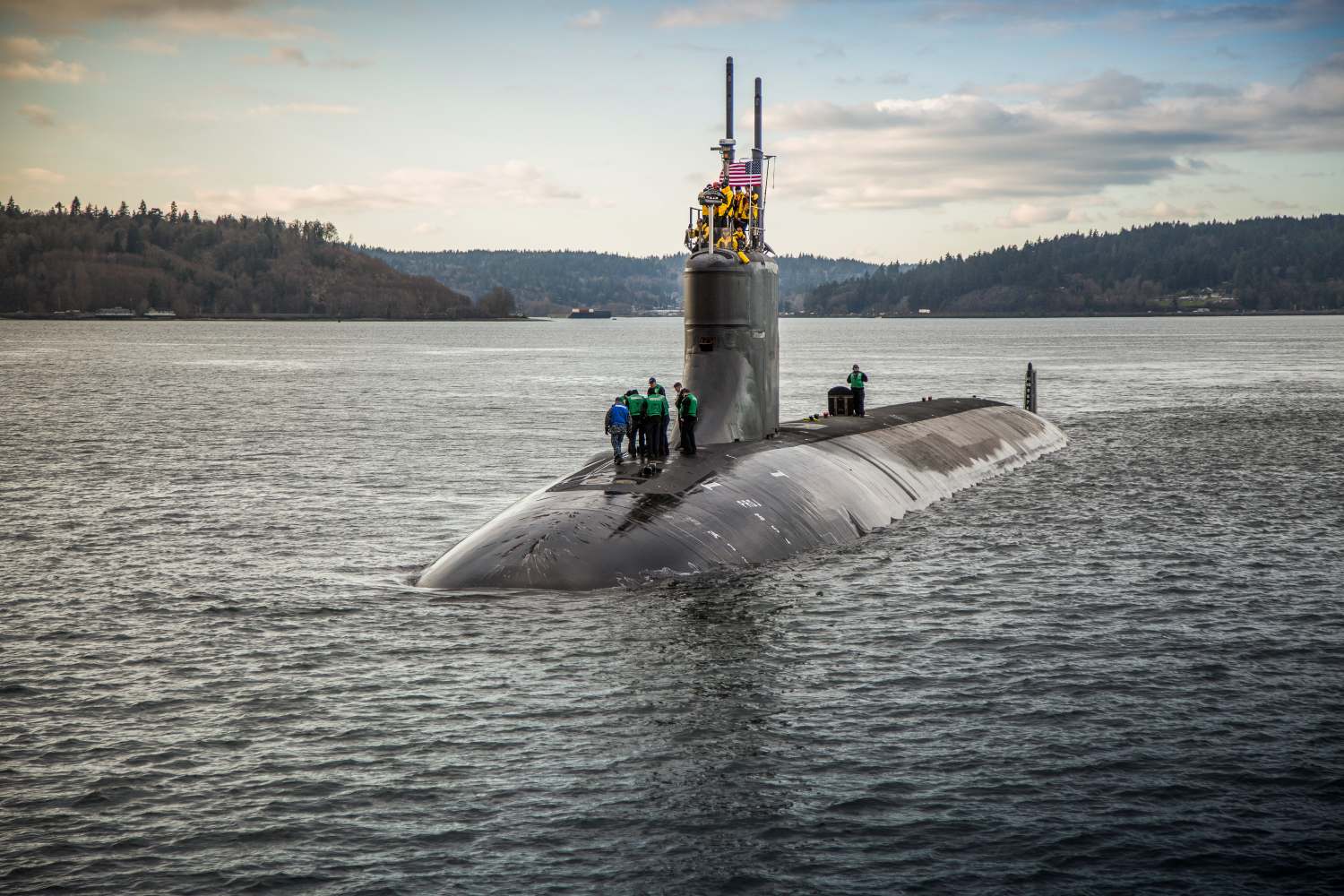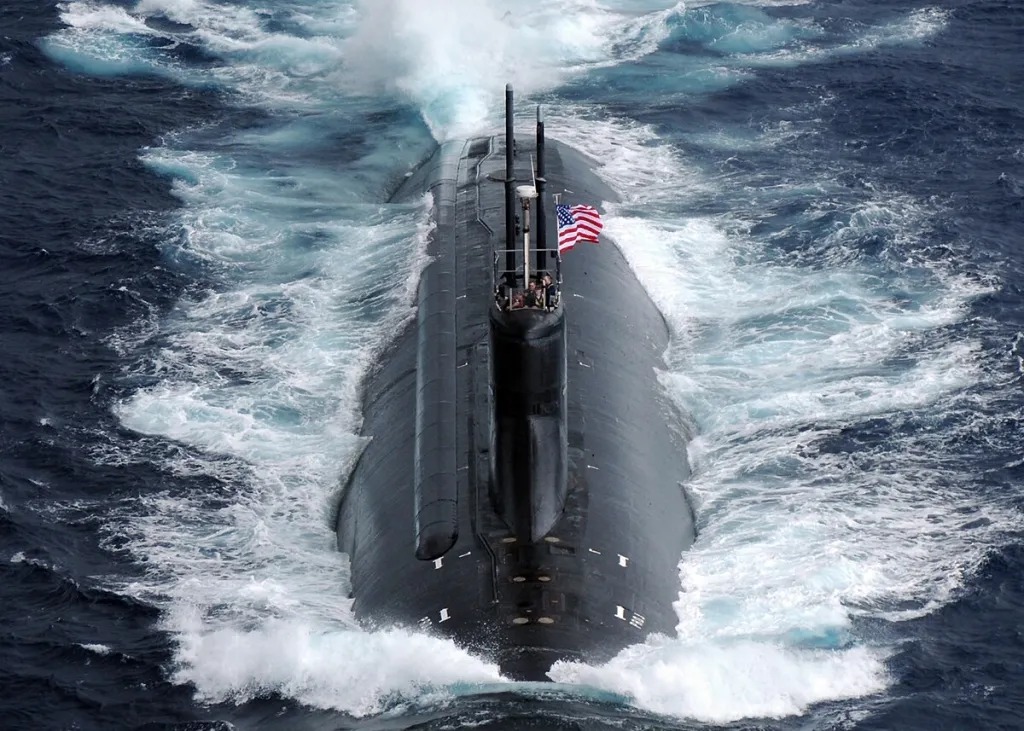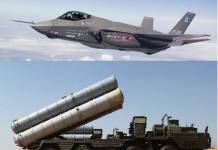The USS Connecticut, a formidable Seawolf-class nuclear attack submarine of the US Navy, is expected to return to service by 2026, five years after it suffered an unexpected collision in the South China Sea.
The USS Connecticut was on a classified mission when it unexpectedly hit a seamount on October 2, 2021, while cruising at high speed in the northern part of the South China Sea. The accident resulted in extensive damage to the submarine’s bow, sonar dome, and other underside components, necessitating major repairs.
Despite the heavy damage, the crew was able to surface the submarine and limp it to the US territory of Guam. Afterward, it was dispatched to San Diego, California, and then to the Puget Sound Naval Shipyard in Washington State.
According to reports in the US media, which cited the US Navy, the USS Connecticut is expected to rejoin duty by the end of 2026, approximately five years after the accident that rendered it out of operational service.
The submarine is currently undergoing an Extended Docking Selected Restricted Availability (EDSRA), which began in February 2023. This maintenance schedule, initially predicted to last 31 months, is designed to address both crash damage and regular maintenance.
The EDSRA has encountered delays, putting the planned return to service from September 2025 to late 2026. These delays are attributable to issues in planning, material availability, and shipyard execution and have led to concerns about America’s shipbuilding and repair capabilities, particularly as the country prepares for a potential military showdown with China in the Indo-Pacific waters.
In 2023, Diana Maurer, a director of the Government Accountability Office’s defense readiness evaluations, said that the delays in the USS Connecticut highlight the US Navy’s repair surge capacity. “That, in turn, raises questions about how the Navy would execute battle damage repairs in the event of a conflict,” she had noted.
The delays are caused by a host of factors. For instance, the Puget Sound Naval Shipyard has long suffered from capacity constraints, a problem exacerbated by the requirement for seismic upgrades to its dry docks, which delayed the USS Connecticut’s entry into dry dock until July 2023. The US Navy is also staring at a massive submarine maintenance backlog, which has further delayed the USS Connecticut’s repair timeline.

In addition to these persistent troubles, the repair work has also been plagued by challenges. The US has only ever produced three Seawolf-class submarines, thus limiting the availability of spare parts, such as replacement bow domes, which are not in the US inventory and require a three-year lead time to procure.
Unlike past incidents where damaged submarines may use parts from defunct vessels, this option is unavailable for the Seawolf class, which complicates and delays the repair process.
The cost of the repairs is currently unknown. Earlier, the Congress authorized $40 million for “emergency repairs” and an extra $10 million for a new bow dome in 2021. Notably, Bloomberg reported in 2023 that the estimated cost would be around $80 million.
Though the US Navy submarines have been in multiple accidents, some lethal, the USS Connecticut collision remains the most controversial in recent memory for two reasons: the delay in repairs that exposes a key lacuna in US capability, and a host of theories peddled by China regarding the submarine accident.
When The Hunter Became Hunted
The USS Connecticut is one of three nuclear-powered Seawolf-class submarines in the US Navy’s fleet. These submarines, originally designed to combat the Soviet Union, are the largest attack submarines in service. The Navy characterizes this class as being exceptionally quiet, fast, well-armed, and equipped with advanced sensor systems.
The collision of the USS Connecticut with a sea mount in the South China Sea, a majority of which is claimed by China as its sovereign territory, shocked the entire US Navy. The service took five days to announce that the submarine had hit a seamount in inadequately mapped waters.
An investigation conducted by the US later revealed that the accident had occurred due to the crew’s lapses and unfamiliarity with the South China Sea. It stated that a series of mistakes in risk management, watch team performance, and navigation planning led to the accident. It concluded that the navigation assessment team had failed to recognize and label ten or more underwater dangers close to the grounding site.
The investigation revealed a general lack of quality control on board the submarine, as evidenced by the absence of leadership in holding seafarers accountable for errors and navigation shortcomings. The failures “fell far below US Navy standards,” the investigation said, adding that at least 11 crew members of the submarine were injured, and the nuke submarine lost its radar dome on the transit to Guam after the crash.
The Commander of the submarine, Cmdr. Cameron Aljilani was dismissed on November 4 that same year for “loss of confidence.”

A host of theories began to emerge shortly after the accident. Some experts stated that the damage was so severe that the submarine might never enter service again, while others suggested that the commission likely occurred because the navigation devices were switched off as the ship transited the contested South China Sea.
“Probably, they did not use the active mode of the hydroacoustic complex, they went in the noise direction-finding mode… they observed secrecy… Noise direction finding, of course, does not allow for detecting something,” former chief of the Russian Navy General Staff, Adm. Viktor Kravchenko, told Sputnik at the time.
The delay on the part of the US Navy in announcing the accident created suspicion and mistrust in China. Days after the official announcement, the Chinese state-owned publication Global Times published a report lamenting the US for not releasing crucial information about the accident of a nuclear-powered submarine.
In fact, Chinese analysts went so far as to conclude that the accident had exposed intensive, hidden US military activities beyond freedom of navigation in the region.
Last year, a declassified Chinese document claimed that the accident was likely caused by a whirlpool spanning hundreds of kilometers that emerged in the South China Sea. A detailed report on this theory can be read here.
While these suspicions continue to persist, the accident dealt a heavy blow to the reputation of the US Navy’s most potent, deadly, and expensive nuclear attack submarine, the Seawolf class, which was designed for elite operations near the enemy’s coast.
The USS Connecticut is a critical asset due to its advanced stealth, speed, and payload capabilities. Its advanced capabilities, including its ability to operate at high speeds with excess reactor capacity, make it a vital asset for operations in contested regions like the South China Sea. The prolonged absence of the submarine has reduced the US Navy’s operational capacity in the Indo-Pacific.
Additionally, the Navy’s efforts to develop a next-generation nuclear attack submarine, known as the SSN(X), which have been in progress since at least 2018 and are partially envisioned as a replacement for the Seawolf class, have been delayed.
Last year, the military announced that it had pushed back the anticipated start date of manufacture for those new boats from the mid-to-late 2030s to the early 2040s. This essentially means that the USS Connecticut needs to return to service quickly to bolster the US Navy’s combat power.
- Contact the author at sakshi.tiwari9555 (at) gmail.com
- Follow EurAsian Times on Google News




